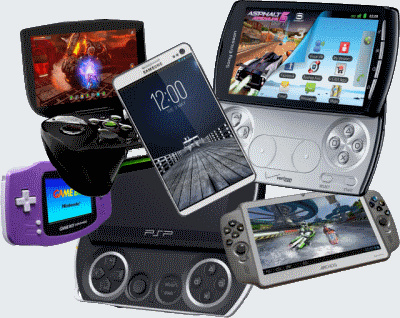
Nintendo officially kicked off the handheld console race with the Game Boy in the spring of 1989. Running games on a 2 bit color palette and an 8 bit processor, Game Boy attracted players with a reasonable $89.99 price tag and familiar games. Over the course of its 14 year lifespan Game Boy sold 118.69 million units worldwide.
Coming up right on Nintendo’s heels was the Atari Lynx. The Lynx boasted a 16 bit CPU, the title of the first color handheld, and the ability to network with 17 other units (though in reality it could only manage 8 or fewer). Technological superiority came at a hefty price, $179.95 to be exact.
Even back in 1990 it was clear that consoles of all shapes and sizes could never simply rely on the power of game play. Sega and their handheld, Game Gear, entered the fray with more than just a larger number of bits in its bite. Thanks to a TV Tuner accessory, a new element surfaced in the handheld world. NEC’s TurboExpress also had a TV Tuner but suffered from several malfunctions due to cheap parts used in the consoles construction. A price tag of $249.99 (which temporarily rose to $299.99, because that always helps sales) did little to help its cause.
Since the big four, handhelds have taken some very interesting routes in order to keep gamers away from the tantalizing grip of mobile devices. Nintendo and Sony have been the most successful in the arms race by adding access to the internet and the ability to sync up with other devices gamers posses.
It really isn’t all too surprising that mobile devices have courted so many consumers away from the more traditional handheld device. Smartphone and tablets have three distinct advantages over handhelds:
- Mobile devices are an every day object for many. Some would even consider mobile devices a necessity these days. There are definitely more mobile devices in every household compared to handhelds.
- Games are cheaper. Instead of paying $40 a game, you can select hundreds of free games from the App Store. Those looking for more than another Angry Birds rip off can pay up to $10 for a more complex game.
- Mobile devices offer a multitude of functions. Smartphones and tablets can do more than play games. They can make calls, send texts, and allow users to switch between work and play easily.
This news is surely adding pressure to gaming big wigs who are desperately fighting off mobile devices. Two examples of spectacular failures in handheld evolution are Gizmondo and Nokia’s N-Gage. Both consoles attempted to marry handhelds and cellphones, thereby manufacturing the first all in one device for gamers. Unfortunately, Gizmondo required players to sit through “Smart Adds,” and N-Gage barely functioned as a phone. Both devices also had ridiculously high prices and practically no games to play.
As phones became smarter and app stores added more games to their libraries, handheld sales dropped across the board. Data released by App Annie and International Data Corporation (IDC) at the end of the second quarter for the current fiscal year, shows mobile games outselling handhelds on all fronts for the first time. Despite this piece of unsettling news, I don’t think it’s time to bow down to our mobile gaming overlords just yet.
Sony and Nintendo aren’t simply going to raise the white flag. In fact Sony has already taken steps to integrate smartphone technology with the handheld console via the Xperia™Z smartphone and Playstation mobile app.
It is just a matter of time before someone figures out the perfect way to meld phones and handhelds together. When that happens, a whole new world of gaming will open up for gamers to explore.




